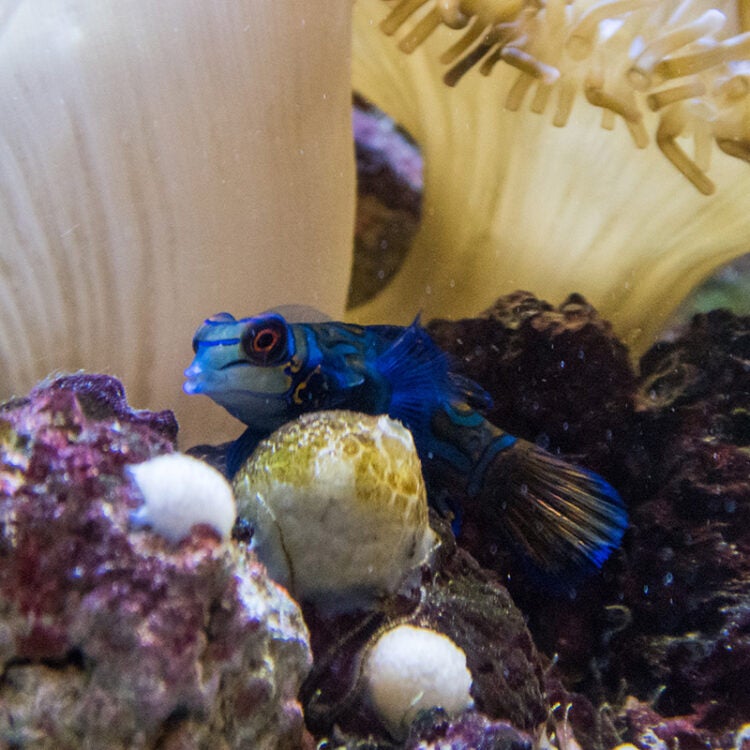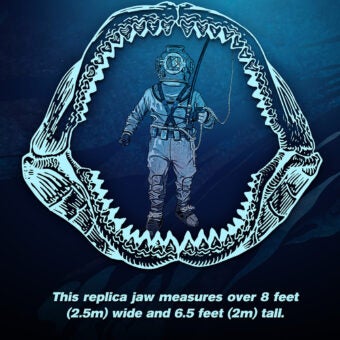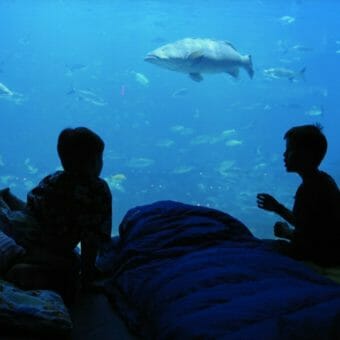-
Size
3 inches (8 cm) -
Diet
Small benthic (bottom dwelling) invertebrates -
Range
Western Pacific -
Habitat
Among coral or in shallow, protected lagoons and inshore reefs
Physical Characteristics
- Small, broad-headed and elongated, scaleless fish that typically reaches about 3 inches (8 cm) in length.
- A brilliantly-colored fish, especially the male, with striking patterns of primarily green and orange.
- Classified as a “dragonet.”
Animal Fun Fact
Mandarinfish are classified as a “dragonet” and is usually found in small groups spread over a small area.
Diet / Feeding
- Diet consists of small benthic (bottom dwelling) invertebrates.
Range / Habitat
- Occurs in the Western Pacific from the Philippine Islands to the Great Barrier Reef.
- Bottom dweller found among coral or in shallow protected lagoons and inshore reefs at depths of 3-60 feet (1-18 m).
- They are usually found in small groups spread over a small area.
Reproduction & Growth
- Oviparous (egg-laying species).
- Males may display courtship “dances”, if a female is interested, she joins in the dancing.
- Sexually dimorphic, like other dragonets: males and females are physically different. Males are larger and exhibit a longer, spined dorsal fin that it uses for display.
Conservation Status
- “Least Concern” on the IUCN Red List.
Additional Information
- Sexually dimorphic, like other dragonets: male and female are physically dissimilar. Male is larger and exhibits a longer, spined dorsal fin that it uses for display.
- Body produces odorous, foul-tasting, toxic mucus to compensate for lack of protective scales. This protects the animal from parasites and deters potential predators.
Sources
- Micronesian Reef Fishes. Meyers, R. F., pg. 232
- Reef Fishes, Volume 1. Michael, S. W., pgs. 56, 138
- Fishes of the World – An Illustrated Dictionary. Wheeler, A., pg. 343
- An Encyclopedia of Fishes. 2nd Edition, pg. 143
- www.fishbase.org







